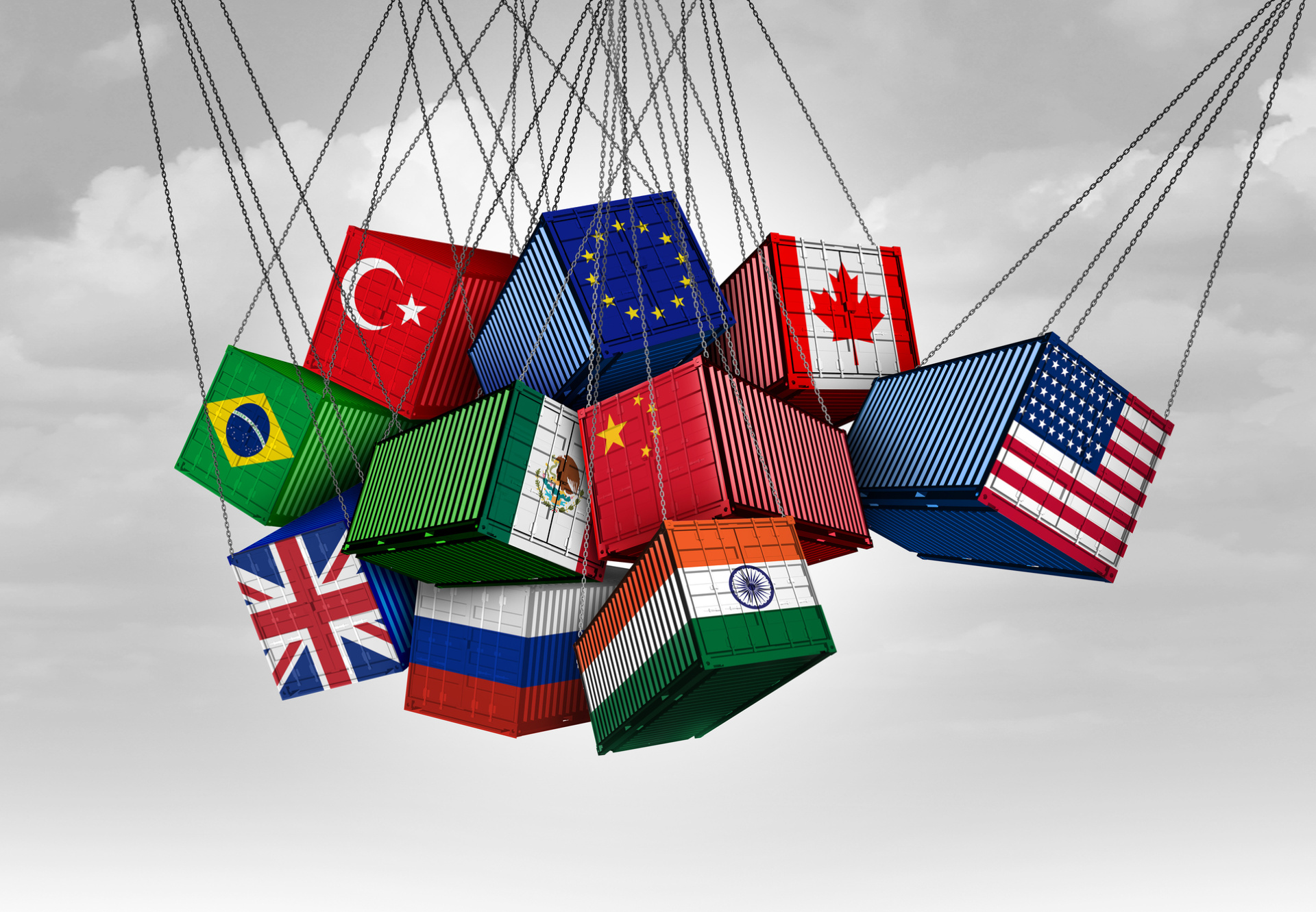1989 in reverse
Market update
US President Trump's flood of decrees and erratic decisions on customs policy are throwing people and markets into turmoil. There is no trace of reliability. This calls for a strategic reassessment of investment policy.
The world is at a historic inflection point – echoing 1989, but with the roles reversed. Then, walls fell and the USA emerged as the unrivalled global superpower. Today, the trend is moving in the opposite direction: New barriers are forming – between countries, political parties and economic blocs. A shifting geopolitical tectonic landscape is taking shape, with profound consequences
for the economy and capital markets
USA: From pillar of stability to source of uncertainty
Once seen as a dependable force for stability and innovation, the United States is increasingly perceived as a source of global unpredictability. Under the banner of “Make America Great Again” (MAGA), the new US administration is pushing to reshore industrial production – through frantic activism, erratic punitive tariff announcements and geopolitical manoeuvring. Just 100 days into President Trump’s term, the early optimism among investors and the business community had already begun to fade. The once-powerful allure of the US economy as a magnet for investors has weakened – uncertainty over the future of MAGA policies looms too large. For now, the idea of American exceptionalism seems to have lost its shine.
US dollar and bonds: confidence is dwindling
Our main concern isn’t with the US economy or US stock market. There are still outstanding companies, especially in the technology and energy sectors. However, US equities are currently trading at high valuations, reducing their overall appeal. More pressing, though, are our concerns about the US dollar and US Treasuries. Their performance is directly influenced by political decisions. While Russia distanced itself more than a decade ago and China has stopped expanding its holdings, European countries are now also starting to question the security of their US dollar reserves. Especially after Stephen Miran’s appointment as economic advisor, proposals like devaluing the US dollar or forcibly converting short-term Treasury bills into 100-year bonds are now being discussed. A fee on US dollar reserves held by central banks is also being considered. Intervening so deeply in the financial system could trigger unpredictable consequences.
Perilous fight to preserve power
Overall, the US government is trying to slow – or evenreverse – its decline as a global power. This approach carries significant risks. In the medium term, continued uncertainty is likely to weigh on US financial markets. As more countries – not just those in the BRICS bloc – shift away from US Treasury bonds and the dollar is intentionally weakened, capital is expected to flow out of the United States. For European investors, only US corporate shares remain investable; however, we advise caution until the current overvaluation is corrected.
Europe – the late dawn
The Russian invasion in 2022, European elections in 2024 and reelection of Trump have jolted Europe out of its complacent slumber of prosperity. The terse dismissal of Ukrainian President Selenskyj at the White House made one thing clear to Europe: the era of protection by “big brother” is over, presenting a significant challenge to Europe. Security is the core responsibility of the state. Since the fall of the Berlin Wall in 1989, the focus has shifted from military to social security – the latter now dominates public spending. Can social spending be cut in favour of defence? In a democracy, that’s hard to push through.
New momentum through new debt
It’s therefore no surprise that Germany’s future Chancellor, Friedrich Merz, seized the moment and pushed through a constitutional amendment – together with the outgoing parliament – to take on new debt for defence and infrastructure. After 15 years of political lethargy, both areas are in a dire state. This move will bring Germany’s debt levels closer to the European average, which is likely to weaken its excellent credit rating and lower resistance to joint euro debt in the future. In the short term, this may have positive effects: the fiscal stimulus is expected to boost growth and attract investors. However, over the medium to long term, this approach may put pressure on the euro.
Strategic shift – Europe ahead of the USA
The fallout from the “Trump-era” tariff chaos has created significant uncertainty. The days of “business as usual” are over. This new situation calls for a reassessment of the personal investment strategy. Given the unpredictability of US policies and the anticipated fiscal stimulus in Europe, the European market currently looks more appealing than its US counterpart. US government bonds now carry greater risk compared with European sovereigns –though, in truth, we think neither option is particularly attractive at the moment. What stands out as more promising is a well-diversified position aligned with the European fiscal stimulus, along with investments in companies that offer strong dividends within domestic markets. After the recent stock market correction, valuations for these companies have become attractive once again. Moreover, these companies are either focused on domestic markets or operate globally, making them less susceptible to trade conflicts






